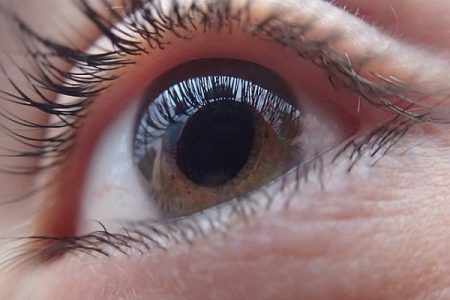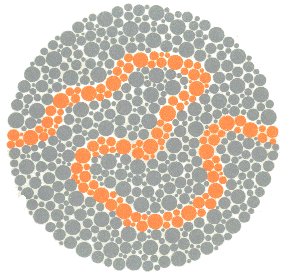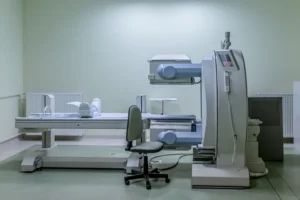Understanding Color Blindness
- Updated on: Jun 27, 2024
- 5 min Read
- Published on Sep 26, 2019


What is color blindness?
Color blindness is defined as a condition in which a person is unable to differentiate between colors. It is also known as color vision deficiency or CVD.
Color blindness is not a form of complete blindness rather it is deficiency which doesn’t allow a person to see some specific colors like yellow and blue or red and green.
How common is color blindness?
Colour blindness is a genetically inherited condition which occurs more frequently in males than in females.
It is a very rare case that a person is fully color blind i.e, cannot see any color. The most common type of color blindness observed in people is red/green color blindness. The effect of color blindness generally is so mild that people don’t even know that they are color blind.
What is the cause of color blindness?
Genetics
Color blindness is a genetically inherited condition and is passed on to the person from their parents. The gene responsible for causing this condition is present on the X chromosome. This is the reason why men are affected by the condition more than women.
In eyes, retina contains two types of light sensitive cells known as rods and cones. Rods are responsible for vision at night whereas cones help in day vision and are also responsible for color discrimination.
People become color blind when cells fails to respond appropriately to light of different wavelength.
The effect of color blindness in a person can range from mild, moderate to severe depending upon the severity of the condition.
Apart from the genetic cause, there are many other causes of color blindness. Some of them are:
Parkinson’s disease
Parkinson’s disease is a neurological disorder that results in damaging of the light sensitive nerve cells and alters the vision processing.
Cataracts
Cataracts results in the clouding of the eye’s natural lens which can wash out color vision making it less bright.
Kallman’s syndrome
It is an inherited condition that involves the failure of the pituitary glands. Color blindness is one of the major symptoms of this condition.
Tiagabine for epilepsy
Tiagabine is an antiepileptic drug that reduces color vision in people suffering with epilepsy who consume it.
What are the different types of color blindness?
Depending upon the defect in the light sensitive cells, color blindness is divided into three categories:
Red-Green Color Blindness
Red-green color blindness is the most common type of color blindness. It occurs due to the limited function or loss of red cones or green cone photopigments. Red-green color blindness is divided into various sub types:
Protanomaly
It is an X-Linked disorder in which the red cone photopigment is abnormal. Colors like red, yellow and orange appears to be green and the colors are not bright. This condition is very mild and does not affect daily life of an individual.
Protanopia
In this condition, the red cone cells are absent in an individual. Red color appears to be black whereas certain shades of orange, yellow and green appear to be yellow.
Deuteranomaly
In this condition, the green cone cell is present in an abnormal state. Yellow and green color appears to be red and it becomes difficult for a person to differentiate between violet and blue. This is a mild condition and does not interfere with daily life of a person.
Deuteranopia
In this condition, working green cone photopigment is not present. Red color seems to be brownish-yellow and green color looks as beige.
Blue-Yellow color blindness
Blue-yellow color blindness is a rare type of color blindness and is not as common as the red-green color blindness.
In this condition, the blue cone photopigment is either not working properly or is missing. There are two sub classifications of blue-yellow color blindness:
Tritanomaly
In people with tritanomaly, the blue cone cells have a limited function. Blue color appears to be green and yellow and red color cannot be differentiated from pink.
Tritanopia
People with tritanopia do not have blue cone cells and thus they see blue color as green and yellow color as violet or light grey.
What is complete color blindness (monochromacy)?
People suffering from complete color blindness does not experience any color at all. It is also known as monochromacy.
There are two different types of monochromacy:
Cone monochromacy
In this type of color blindness, two out of three cone cell photopigments fail to work. Such people have difficulty in distinguishing colors.
Rod monochromacy
This type of color blindness is the most severe type of color blindness as none of the cone cells have functional photopigments. People with rod monochromacy see the world in black, white and gray color.
How is color blindness diagnosed?
There are a variety of tests for color blindness which can easily and quickly tell about the specific type of color blindness. Some common tests for diagnosis are as follows:
Tests and methods for diagnosis color blindness
Ishihara Color Test
This test is the most common type of test meant for red-green color blindness. This test comprises of a series of colored circles known as Ishihara plates each of which contains dots of different color and sizes. These dots are clearly visible to those people with normal color vision but become very difficult to recognize for color blind patients.
Cambridge Color Test
This test is similar to Ishihara color test except the fact that this test is displayed on a computer monitor. The main objective to the patient is to recognize the ‘C’ shape that is different in color from the background color.
The letter is present in four orientations and the patients are asked to press the key that corresponds to the correct letter orientation.
HRR Pseudoisochromatic Color Test
This is another red-green color blindness test which uses color plates to test for color blindness.
Farnsworth Lantern Test
This test is used by the military of U.S to know the severity of color blindness in soldiers. Those people who pass the test with mild form are allowed to serve in the armed forces.
What are the treatment options for color blindness?
Currently, there is no possible treatment for genetically inherited color blindness. Doctors usually prescribe color filters and contact lenses in some mild situations to enhance the brightness of some colors.
Other than color filters and contact lenses, there are various applications for gadgets that are specifically made to help color blind people to view colors properly.
Most of the people adapt themselves to their color blind deficiencies without much difficulty but in some professions like graphic designs etc, people find it very difficult to cope with their condition.
How does color blindness affect daily life of an individual?
A person suffering from color blindness finds it very difficult to read the color-coded information such as pie-charts and bar graphs.
Color blindness can adversely affect the education of children who aren’t yet diagnosed with the condition. They may have difficulty in reading color coded graphics and information or anything written on the board.
These children face major difficulties in art classes because such classes are all about colors.
Recognizing traffic signals can be very difficult and driving can be dangerous for color blind people.
Color blindness also affects eating habits of a person. For example, a person with color blindness is sometimes unable to identify ripe bananas from unripe as they are unable to identify between green and yellow color of the banana.
Color blind people need to adapt to their deficiency so that they can live a life which is not much complicated.












